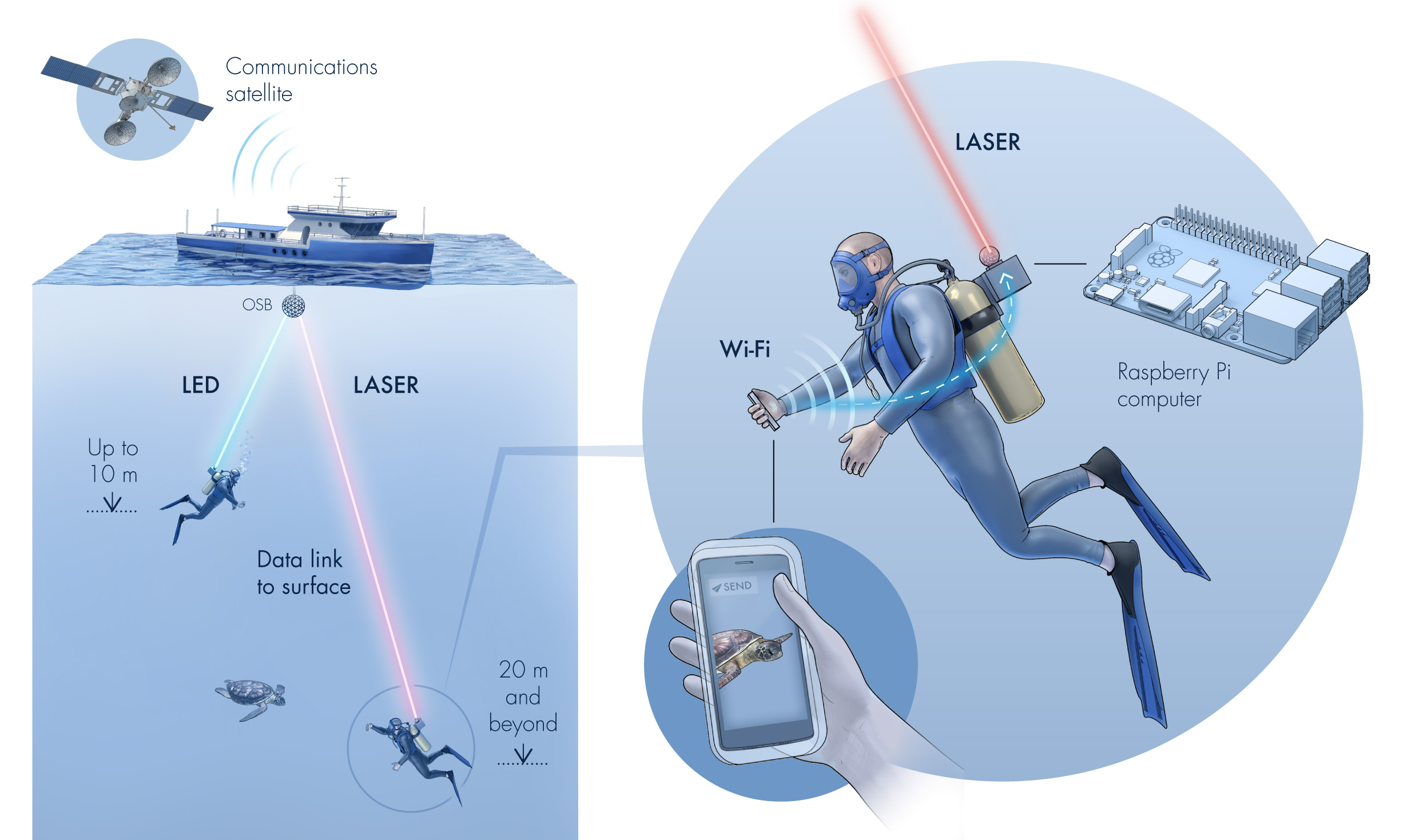Scientists Use Raspberry Pi to Shoot Wi-Fi Lasers From More Than 20 Feet Underwater
It’s not quite sharks with frickin’ laser beams attached to their heads, but researchers at Saudi Arabia’s King Abdullah University of Science and Technology have come up with a new way to browse the internet: using lasers to Skype with Scuba divers.
Called Aqua-Fi, this new approach to connectivity is about more than just posting coral reef selfies to Twitter. Instead, scientists hope to use it to control diving robots, monitor pollution from underwater industries, and even introduce underwater GPS. For now, though, they’re testing it with simple video chats.
With Wi-Fi stretching from the ground to airplanes, we’re used to having coverage pretty much wherever we go. But for decades now, underwater communications have still relied on sonar and low frequency radio. That means slow connection speeds that can only support downloads of about 700 words per minute in text and virtually no uploads.
Aqua-Fi, however, works on a different principle. In experiments, researchers sent scuba divers underwater wearing Raspberry Pis that converted wireless internet signals from their waterproof phones into optical laser signals, which they then shot upwards to a receiver attached to a surface buoy.
The buoy then sent those signals to an orbiting satellite, which KAUST researchers used to hold bi-directional Skype calls with the divers.
This stems from research the research team started in 2017, where they used a blue laser to transmit a 1.2 gigabit file underwater. However, this marks their first breakthrough in real-time back and forth communication.
The team’s other goal was to keep the tech for Aqua-Fi cheap and accessible. That meant no custom made parts, according to Basem Shihada, an associate professor of computer science at KAUST and one of the researchers on the project. This is what led the team to using Raspberry Pis, though they did eventually have to install a custom circuit to enable conversion between wireless and optical signals.
This philosophy also influenced the type of optical beam the team used, as their first design used LEDs instead of lasers. Unfortunately, the LEDs couldn’t transmit beyond 7 meters and could only achieve data rates up to 100 kilobits per second, whereas the blue and green lasers they eventually upgraded to could go beyond 20 meters and could transmit data at rates up to 2.11 megabits per second.

“Aqua-Fi can go as deep as the laser can propagate in water,” Shihada explained in an email interview with Tech Republic, though there is a caveat. “The range and data rates are related. With longer range, the data rate is reduced.”
However, he assured that the team is working on using relays to help improve signal integrity at lower depths.
While initial tests have focused mostly on fun applications like video chat (now that’s social distancing), the team at KAUST hopes to employ Aqua-Fi towards both industrial uses and towards helping us better understand the Earth. This extends from use cases like connecting underwater stations and autonomous vehicles to terrestrial networks to mapping out the ocean in more detail than we’ve ever seen before.
“Since Aqua-Fi is Wi-Fi-based, it can also transfer the GPS coordinates of the devices underwater,” Shihada said. “Without Aqua-Fi, GPS signals cannot propagate in sea water.”
He then explained that “More than 70% of Earth is covered with water and just 5% of Earth’s oceans have been explored and mapped. So clearly there is a great potential and need for underwater engineering in general.”
For example, in addition to helping us understand our planet, Shihada said that underwater GPS could help with search and rescue operations, maintaining underwater pipelines, and even recreation like snorkeling livestreams.
Because the Raspberry Pis the KAUST team uses have custom circuits, we’re going to have to rely on them for further news on Aqua-Fi for now. But it’s impressive that they were able to get this all up-and-running on off-the-shelf equipment. Who knows? Maybe you’ll be able to game in your family pool soon enough.
Get Tom's Hardware's best news and in-depth reviews, straight to your inbox.
Michelle Ehrhardt is an editor at Tom's Hardware. She's been following tech since her family got a Gateway running Windows 95, and is now on her third custom-built system. Her work has been published in publications like Paste, The Atlantic, and Kill Screen, just to name a few. She also holds a master's degree in game design from NYU.
